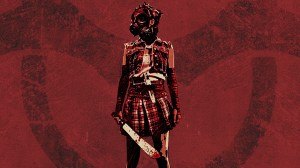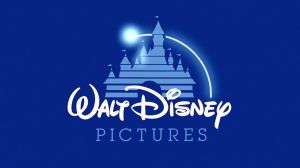One of the most persistent challenges facing mainstream comic book publishers — such as DC, Marvel, and Archie Publications — is how to keep their long-running characters relevant after decades of continuous publication. While the typical strategy for evolving a character often involves updating their appearance and personality to reflect contemporary life and culture, Archie Publications took a very different approach. Instead of trying to make its fun-loving, happy-go-lucky characters from Riverdale look, think, and act like people from our modern society, the company placed them squarely within one of the most popular cultural trends of the past two decades: the “monster boom.”
Videos by ComicBook.com
In 2013, Archie Publications made a bold choice to tap into the popularity of the zombie apocalypse, bringing a bit of the supernatural to a comic line primarily known for its humor, teen antics, and social comedy. While Archie Comics had featured periodic monster stories, these were mainly seen as one-offs. This decision proved to be a stroke of genius for the Archie Publications “brain trust.” Readers so enthusiastically embraced the new content that the company decided to establish a specialized monster-focused imprint, marking the birth of Archie Horror. However, Archie Horror became more than just an alternative to the usual lighthearted Archie tales; it evolved into a legitimate and respected horror-sphere in its own right.
Archie Horror – From Laughs and Giggles to Gasps and Screams

The origins of Archie Horror can be traced back to 2013 with the release of Afterlife with Archie — a limited series by Roberto Aguirre-Sacasa and Francesco Francavilla that reimagines Archie and his friends in a gruesome zombie apocalypse. The following year, Aguirre-Sacasa teamed up with artist Robert Hack for Chilling Adventures of Sabrina, which delved into the dark, occult side of teenage witch Sabrina Spellman’s world. The success of these two series prompted Archie Publications to officially launch Archie Horror in 2015 as an in-house imprint dedicated to horror and monster-themed content. This move catered to fans who had clearly embraced the darker, more macabre take on the beloved Archie Comics universe.
Since that time, over the course of the next decade, Archie Horror has established itself as a producer of fan-favorite monster content. Beyond the Afterlife and the Chilling Adventures of Sabrina, Archie Horror has gone on to produce such beloved titles as Jughead: The Hunger – which follows Jughead’s dark adventures as an always-hungry werewolf; Vampironica – a tale about Veronica navigating life as a teenager and a vampire in Riverdale; and the anthology series Chilling Adventures Presents – which gives a stage to explore other Archie Comics characters in horror and supernatural settings.
Archie Horror‘s Special Scary Sauce

While the Archie Horror line has carved out a beloved niche within the Archie Comics universe, it has also made a significant contribution to the horror comic genre as a whole. Arguably, it offers some of the best horror content currently available. One key reason for its effectiveness is that, unlike many other horror narratives, Archie already holds a deep-rooted presence in American popular culture. We know the characters, the subplots, the settings, and the lore.
The genius of Archie Horror lies in its ability to subvert our collective understanding of that familiar world, twisting it into something dark, wicked, and genuinely terrifying. What could be more chilling than seeing the preternaturally laid-back Jughead let his insatiable hunger drive him to bite off the head of the waitress taking his order? This horror is unexpected, creating a visceral and uniquely blood-curdling sense of dread — a fear no other mainstream horror series quite manages to evoke. That stark incongruity is precisely what makes it so compelling. It’s no ordinary run-of-the-mill horror – it’s Archie Horror.
Archie Horror Consistently Delivers the Fear

While the Archie-specific elements play a pivotal role in what makes Archie Horror so compelling, they are far from the only reason for its success. Archie Horror also incorporates many of the core elements that make classic monster stories effective. For instance, there’s a pervasive sense of creepiness and constant foreboding, which is heightened by the consistently excellent artwork across the line, even though each title features a different artist. One could even argue there’s an unofficial “Archie Horror School of Art.” The visual style leans heavily on shadows, stark contrasts between light and dark, and intense close-up perspectives to amplify moments of fear and dread, not to mention plenty of gore. The art serves as the perfect accelerant for the atmosphere and mood, helping to elevate the horror experience throughout the series.
While some may debate the quality of Archie Horror, there’s no denying that it stands out in the horror comics landscape thanks to the unique mechanics by which it generates fear. Backed by strong writing, consistently moody artwork, and a commitment to the core elements of great horror, the imprint consistently delivers high-quality, memorable scares. For these reasons, Archie Horror unquestionably deserves a place in the “best horror” conversation.









